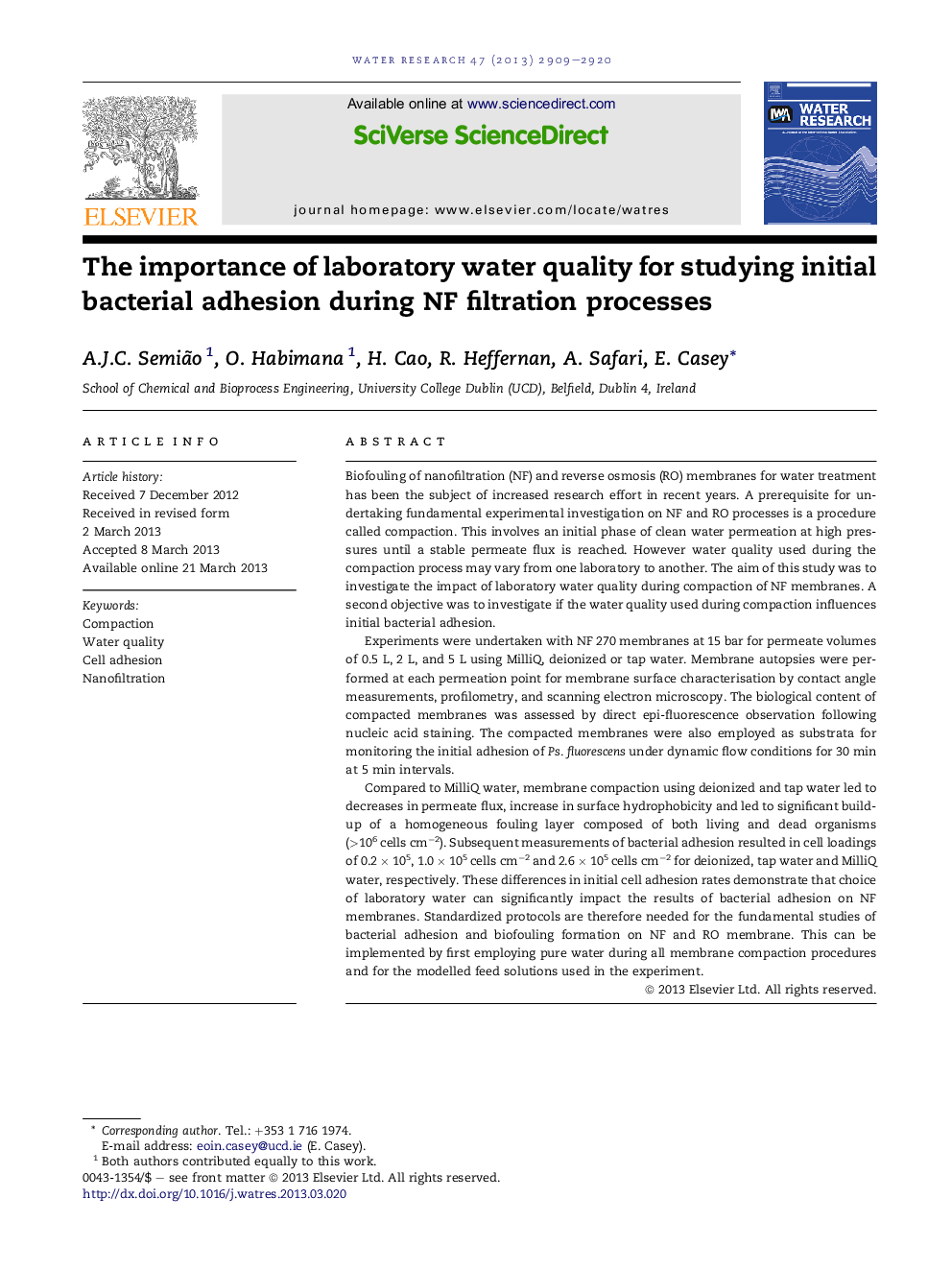| Article ID | Journal | Published Year | Pages | File Type |
|---|---|---|---|---|
| 4482258 | Water Research | 2013 | 12 Pages |
•Laboratory water quality impacted surface properties of nanofiltration membrane during compaction.•When compacted with DI and tap water, the membrane surface became more hydrophobic.•When compacted with DI and tap water, a cake layer comprising of bacteria and organic carbon resulted.•The changes on membrane surface following compaction significantly affected bacterial adhesion.
Biofouling of nanofiltration (NF) and reverse osmosis (RO) membranes for water treatment has been the subject of increased research effort in recent years. A prerequisite for undertaking fundamental experimental investigation on NF and RO processes is a procedure called compaction. This involves an initial phase of clean water permeation at high pressures until a stable permeate flux is reached. However water quality used during the compaction process may vary from one laboratory to another. The aim of this study was to investigate the impact of laboratory water quality during compaction of NF membranes. A second objective was to investigate if the water quality used during compaction influences initial bacterial adhesion.Experiments were undertaken with NF 270 membranes at 15 bar for permeate volumes of 0.5 L, 2 L, and 5 L using MilliQ, deionized or tap water. Membrane autopsies were performed at each permeation point for membrane surface characterisation by contact angle measurements, profilometry, and scanning electron microscopy. The biological content of compacted membranes was assessed by direct epi-fluorescence observation following nucleic acid staining. The compacted membranes were also employed as substrata for monitoring the initial adhesion of Ps. fluorescens under dynamic flow conditions for 30 min at 5 min intervals.Compared to MilliQ water, membrane compaction using deionized and tap water led to decreases in permeate flux, increase in surface hydrophobicity and led to significant build-up of a homogeneous fouling layer composed of both living and dead organisms (>106 cells cm−2). Subsequent measurements of bacterial adhesion resulted in cell loadings of 0.2 × 105, 1.0 × 105 cells cm−2 and 2.6 × 105 cells cm−2 for deionized, tap water and MilliQ water, respectively. These differences in initial cell adhesion rates demonstrate that choice of laboratory water can significantly impact the results of bacterial adhesion on NF membranes. Standardized protocols are therefore needed for the fundamental studies of bacterial adhesion and biofouling formation on NF and RO membrane. This can be implemented by first employing pure water during all membrane compaction procedures and for the modelled feed solutions used in the experiment.
